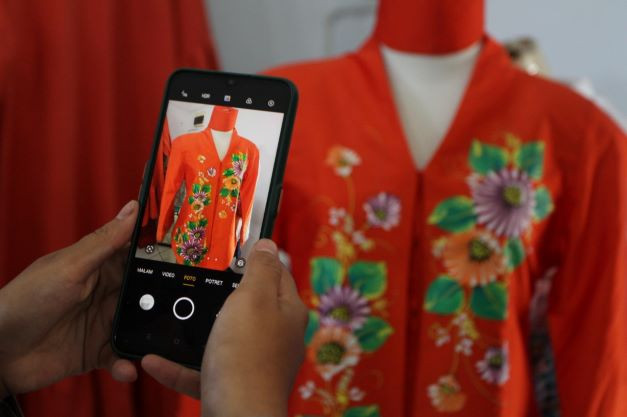Popular Reads
Top Results
Can't find what you're looking for?
View all search resultsPopular Reads
Top Results
Can't find what you're looking for?
View all search resultsSME vs IDE: Which one is culturally fitter?
Many solely emphasize small and medium enterprises as the solution to economic problems without truly understanding what SMEs are.
Change text size
Gift Premium Articles
to Anyone
N
ot long ago, I visited a friend who is the CEO and owner of one of the top 10 insurance companies. Inside his office, numerous business books commonly found at international airports decorate the shelves.
In conversation with him, whose family's business was the first to be listed on the country's stock exchange, I delved into the topic of technological disruption heavily discussed in the media. His industry has experienced significant disruption.
My friend expressed frustration at how we tend to jump on trends, be it "4.0", "disruption" or "platform-based apps", making everything revolve around these buzzwords. Additionally, there is an excessive use of the terms "innovation" and "digital" despite the numerous future technology-based businesses not being strictly digital. The theme of "nurturing entrepreneurship" suddenly gained popularity, with everyone now talking about "entrepreneurship".
The issue we addressed that afternoon focused on the misinterpretation of the platform matchmaking business as a digital business, disregarding the fact that most products produced and sold are tangible, not digital.
My friend presented a clear distinction between "brick and mortar businesses" and the trendy "platform matchmaking business". This reminded me that brick-and-mortar businesses are the backbone of the platform business.
He understood the complementary dichotomy between small and medium enterprises (SMEs) and innovation-driven enterprises (IDEs). He acknowledged the importance of brick-and-mortar businesses and home-based or medium and large-scale industries. However, certain groups solely emphasize SMEs as the solution to economic problems without truly understanding what SMEs are. Clearly, they lack a deep understanding of entrepreneurship since they never seriously studied it nor engaged in entrepreneurship themselves.
The prevalence of trend-following and only possessing superficial knowledge is eloquently described by Mark Twain: "It ain’t what you don’t know that gets you into trouble. It’s what you know for sure that just ain’t so." In other words, trouble arises not from what you don't know, but from confidently believing in half-truths or misconceptions.
In Indonesia, there are approximately 62 million SMEs that engage in traditional goods and services. Examples include mom-and-pop stores, home industries and local gyms. These businesses are essential, particularly during the 1998 Asian crisis when they were the least affected, significantly contributing to the overall economy.
However, they lack the capacity to drive the entire economy. Nevertheless, SMEs can serve as alternative sources of employment and meaningful services for society. It is essential to note that the definition of SMEs for tax purposes differs from the general understanding, indicating businesses with annual revenues below Rp 4.5 million (US$300).
SMEs indeed serve as the economic backbone, especially for entrepreneurs with limited education and fundamental skills. They offer individuals the opportunity to work independently, relying on their basic skills, evident when larger companies rationalize their workforce through layoffs.
Regrettably, SMEs often have a limited workforce, usually comprising the founder, their spouse and a few employees. While these SMEs create jobs, they typically offer low wages (many below the minimum wage) and lack benefits such as insurance, overtime pay or health coverage.
My friend prefers the term IDEs over SMEs, as these businesses exhibit distinctive traits. IDEs involve substantial capital, which can be at risk before reaching the break-even point (if they survive). The time to reach this point is relatively long, but the opportunities for income and market expansion are substantial.
As the saying goes, "higher risk, higher return", IDEs' primary challenge often lies not in their inventions but in identifying their target buyers.
Examples include biotech or global pharmaceutical companies. IDEs typically employ educated individuals with advanced training, such as doctors, molecular biologists, or Master of Business Administration (MBA) graduates. As these companies grow, they also hire technicians, factory workers, hospital staff and more.
Differentiating between jobs created by SMEs and those created by IDEs is crucial, as they are fundamentally distinct, necessitating diverse policy support.
While SMEs contribute to job creation, they represent only a small portion of the transformation required for a large-scale economic overhaul. The focus should be on IDEs, which create more jobs, expand exports and lead the region. Hence, to achieve the country's goals of job creation and economic prosperity, IDEs should be the primary focus of government strategies and policymaking.
Preserving SMEs simply due to their existence may perpetuate a vicious cycle. They might end up being the last to escape the "middle-income trap" or even fall into the "low-income trap".
A straightforward suggestion is to link SMEs with activities that foster a highly knowledgeable and skilled generation in the next 10-15 years. Ideally, this initiative should have started 15 years ago, but it can also begin now. Apologies, this does not pertain to the digital economy.
Again, not all types of jobs are created equal. Both SMEs and IDEs are needed to create the dynamic economy desired by the government and its people. As such, ministries should have departments with different mindsets and programs, all working toward the same goal. Different training programs should be implemented. Furthermore, tax incentives should be given to accelerator and mentoring providers catering to both SMEs and IDEs. Support programs for entrepreneurs must be carefully tailored to each group's specific needs.
If regulations for SMEs and IDEs are mixed, or if we preserve SMEs without providing them with the technological capabilities necessitating different education, training and recruitment, then we are not leaving any legacy; we are merely engaging in a temporary endeavor.
Fostering disciplined entrepreneurs should be the primary focus, aiming to create tough entrepreneurs proven to generate disciplined individuals with shared values. We have the tools and frameworks already, successfully creating an entrepreneurial ecosystem equivalent to the economic power of a top-10 country.
Over the past 25 years, a powerful country has witnessed the creation of 40 million tagged businesses, all IDE types. Let's concentrate on crafting fishing rods, rather than just providing fish. Offer robust and dynamic tools or frameworks that teach entrepreneurs to be "paying customer-oriented" despite limited capital, avoiding the trap of being "product-oriented".
***
The writer, a graduate of Harvard Business School, is a lecturer in industrial entrepreneurship at the School of Electrical Engineering and Informatics-Bandung Institute of Technology (STEI-ITB).










